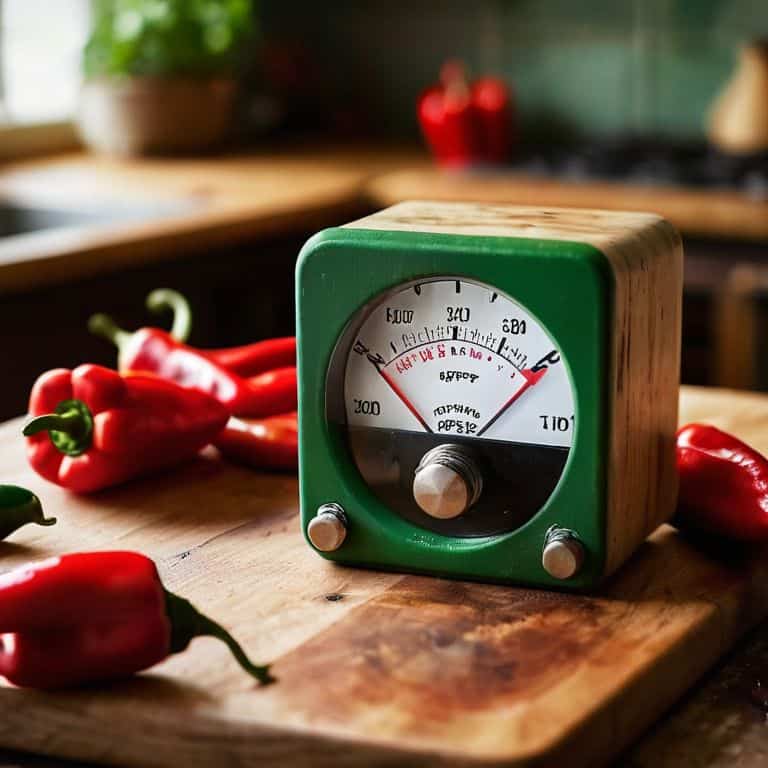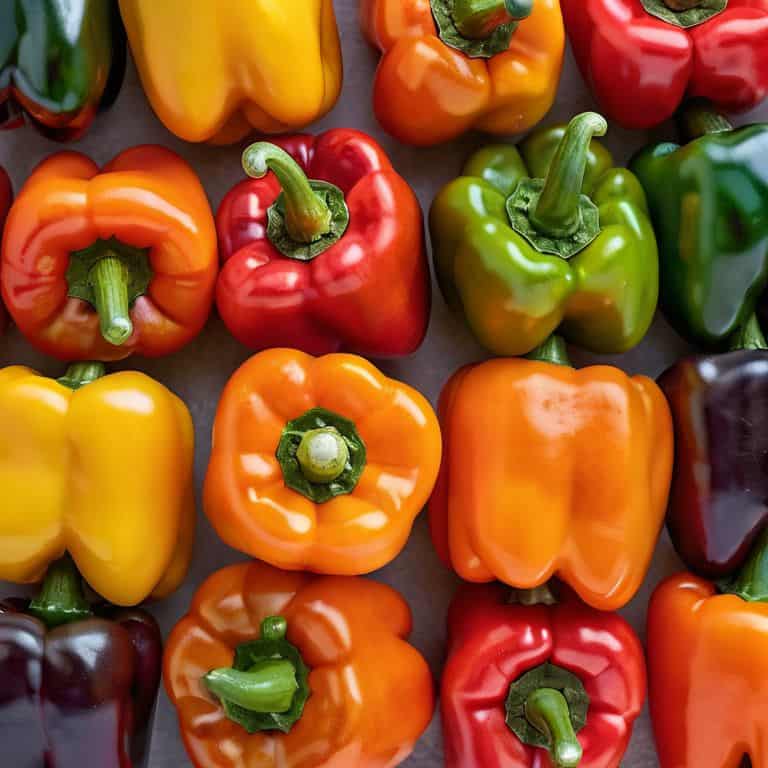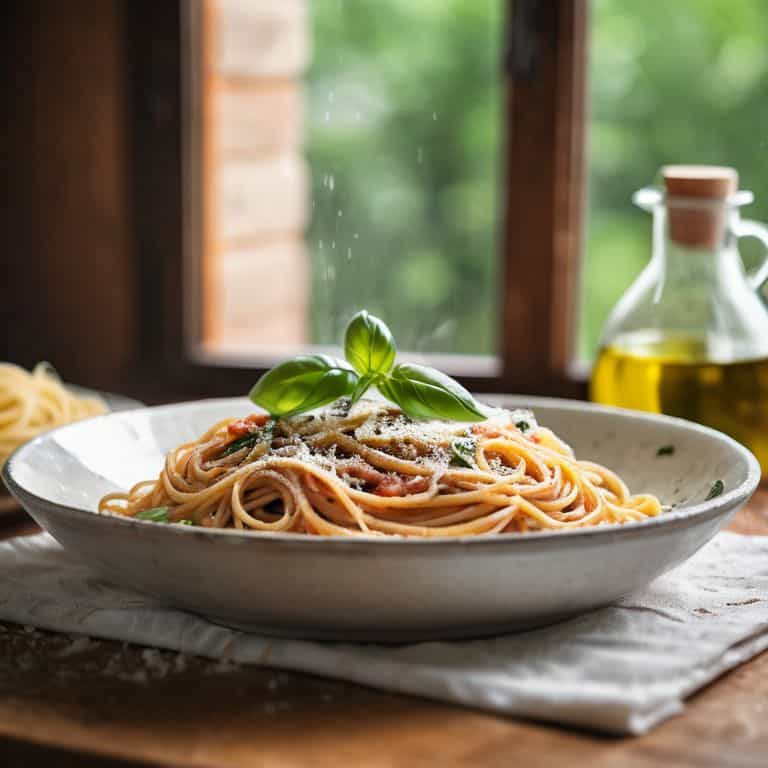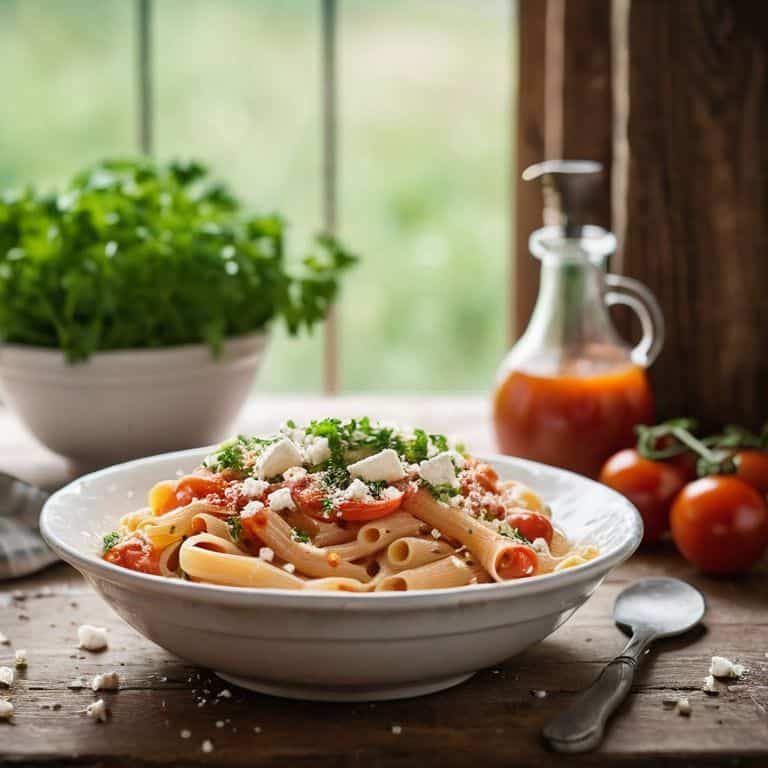I still remember the first time I stumbled upon the Scoville scale – it was like unlocking a secret code to the world of spicy foods. I was trying to recreate a viral recipe for the spiciest noodle challenge, and I needed to understand which peppers would bring the heat. That’s when I discovered that a guide to the Scoville scale was not just about measuring the heat level of peppers, but about elevating your cooking game to the next level. I was hooked, and now I’m on a mission to share my knowledge with you.
In this article, I’ll give you the lowdown on how to master the Scoville scale and take your recipes to new heights. You’ll learn how to decode the Scoville scale, understand which peppers to use for the perfect balance of flavor and heat, and discover some game-changing tips for incorporating spicy elements into your cooking. Whether you’re a spice rookie or a seasoned pro, this guide to the Scoville scale will give you the confidence to experiment with new flavors and create dishes that will leave your friends and family begging for more. So, buckle up and get ready to join the flavor revolution!
Table of Contents
- Guide Overview: What You'll Need
- Step-by-Step Instructions
- Unleash the Heat a Guide to the Scoville Scale
- Ranking the Hottest Understanding Scoville Heat Units
- Spice Up Your Life Using the Scoville Scale for Hot Sauce
- BRING THE HEAT: 5 Key Tips to Mastering the Scoville Scale
- KEY TAKEAWAYS: LEVEL UP YOUR SPICE GAME
- Sweat, Tears, and Flavor
- Bringing the Heat: Your Scoville Scale Takeaway
- Frequently Asked Questions
Guide Overview: What You'll Need

Total Time: 1 hour 15 minutes
Estimated Cost: $0 – $10
Difficulty Level: Easy
Tools Required
- Computer or Mobile Device (with internet access)
Supplies & Materials
- Pepper Samples optional, for hands-on experience
Step-by-Step Instructions
- 1. First, let’s talk about what the Scoville scale actually is – it’s a method of measuring the heat level of a pepper by quantifying the amount of capsaicin present, which is the compound that gives peppers their spicy kick. To get started, you’ll need to understand that the Scoville scale is measured in Scoville Heat Units (SHU), with higher numbers indicating a greater amount of capsaicin and, therefore, more intense heat.
- 2. Next, you’ll want to familiarize yourself with the different levels of the Scoville scale, ranging from 0 SHU for a sweet pepper to over 2 million SHU for the infamous Carolina Reaper. This will help you gauge your tolerance and choose peppers that fit your desired level of spiciness. Start by exploring the lower end of the scale, with peppers like the Anaheim or Poblano, and work your way up to the hottest peppers.
- 3. Now that you have a basic understanding of the Scoville scale, it’s time to start experimenting with different peppers. Begin by trying a few different varieties, taking note of their unique flavors and heat levels. You can start with simple recipes like stir-fries or sauces, and gradually move on to more complex dishes as you become more comfortable with the pepper’s personality.
- 4. When working with extremely hot peppers, it’s essential to take proper precautions to avoid irritating your skin or eyes. Wear gloves when handling the peppers, and avoid touching your face or sensitive areas. If you do accidentally irritate your skin, try using a dairy product like milk or yogurt to help neutralize the heat.
- 5. To accurately measure the Scoville scale of a pepper, you’ll need to use a technique called High-Performance Liquid Chromatography (HPLC). However, for the average cook, this isn’t a practical or necessary step. Instead, focus on developing your palate and learning to recognize the unique characteristics of different peppers. This will allow you to make informed decisions when choosing peppers for your recipes and help you elevate your dishes.
- 6. As you become more confident in your understanding of the Scoville scale, start pushing the limits of your recipes by incorporating increasingly spicy peppers. You can add diced jalapenos to your favorite salsa or use ghost peppers to give your BBQ sauce an extra kick. Remember to always taste as you go and adjust the heat level to your liking.
- 7. Finally, don’t be afraid to get creative and experiment with different combinations of peppers to create unique and complex flavor profiles. Try pairing sweet and spicy peppers, like the Anaheim and the Habanero, to create a flavor bomb that will leave your taste buds tingling. With practice and patience, you’ll become a master of the Scoville scale and be able to craft dishes that are both delicious and daring.
Unleash the Heat a Guide to the Scoville Scale

Now that you’ve got the basics down, it’s time to _dive deeper_ into the world of Scoville heat units. Understanding how to measure pepper spiciness is key to unlocking your full flavor potential. I like to think of the Scoville scale chart as a roadmap to the hottest peppers out there – it’s all about ranking the hottest peppers and finding the perfect level of heat for your taste buds.
When it comes to using the Scoville scale for hot sauce, things can get pretty interesting. You’ve got to consider the type of peppers used, the preparation method, and even the desired level of heat. It’s not just about throwing a bunch of hot peppers into a blender and hoping for the best – although, let’s be real, that can be pretty fun too. Measuring pepper spiciness is an art form, and it requires a bit of finesse.
As you explore the history of the Scoville scale, you’ll start to appreciate the science behind it. It’s not just a random ranking system – it’s based on actual chemical reactions and careful measurements. By grasping the concept of Scoville heat units, you’ll be able to take your cooking to the next level and create dishes that are both incredibly flavorful and seriously spicy. So, go ahead and get creative with those peppers – your taste buds will thank you!
Ranking the Hottest Understanding Scoville Heat Units
Now that we’ve unleashed the heat, it’s time to rank the hottest. Scoville Heat Units (SHU) are the key to understanding which peppers will bring the fire. I’m talking ghost peppers, habaneros, and scorpion peppers – the big leagues. These peppers are not for the faint of heart, with SHU ratings that will make your taste buds sweat. From a mild 1,000 SHU for a banana pepper to a mind-blowing 2 million SHU for the Carolina Reaper, the scale is all about measuring that heat.
I’m obsessed with finding the perfect balance of flavor and heat, and SHU helps me do just that. Whether I’m whipping up a spicy stir-fry or testing the limits of my taste buds, understanding SHU is essential. It’s not just about being a spice rookie or a chili crisp fanatic like me – it’s about respecting the pepper’s power and using it to elevate your dishes.
Spice Up Your Life Using the Scoville Scale for Hot Sauce
Now that we’ve got the basics down, let’s talk hot sauce – the ultimate game-changer for any dish. I’m obsessed with using the Scoville scale to level up my hot sauce game, and you should be too! It’s all about finding that perfect balance of heat and flavor. When I’m creating a new recipe, I always look for hot sauces that pack a punch, but won’t overwhelm the other ingredients. For example, if I’m making a spicy ramen, I might reach for a hot sauce with a Scoville rating of 30,000-50,000 – it adds a nice kick without blowing my head off.
I love experimenting with different hot sauces and their Scoville ratings to create unique flavor combos. Like, have you ever tried pairing a milder hot sauce with some chili crisp? It’s a total flavor bomb! The key is to understand how the Scoville scale works, so you can mix and match hot sauces like a pro. Trust me, once you start using the Scoville scale to spice up your hot sauce game, you’ll never go back to boring, bland dishes again.
BRING THE HEAT: 5 Key Tips to Mastering the Scoville Scale
- Know your limits: Don’t be a hero, start with a low Scoville rating and work your way up to avoid overwhelming your taste buds
- Balance is key: Pair intense heat with complementary flavors to avoid overwhelming your dish
- Experiment with different types of peppers: From jalapenos to ghost peppers, each has a unique flavor and heat profile
- Pay attention to preparation: The way you prepare your peppers can affect their Scoville rating, so chop, slice, or dice with caution
- Chili crisp is your friend: Add a sprinkle to any dish to instantly elevate the flavor and heat – trust me, it’s a game-changer!
KEY TAKEAWAYS: LEVEL UP YOUR SPICE GAME
I can now measure the heat of any pepper or hot sauce using Scoville Heat Units, and use that knowledge to take my recipes to the next level
The Scoville scale is all about understanding the chemistry behind spice, and how to balance it for maximum flavor impact
By mastering the Scoville scale, I can experiment with new hot sauces, peppers, and recipes, and join the ranks of the truly spice-illuminated
Sweat, Tears, and Flavor
The Scoville scale isn’t just a measure of heat, it’s a key to unlocking the ultimate flavor bomb – and if you’re not using it to level up your recipes, you’re missing out on the spice of life!
Leo Kim
Bringing the Heat: Your Scoville Scale Takeaway

That’s a wrap, folks! We’ve covered the basics of the Scoville scale, from understanding Scoville Heat Units to using the scale to level up your hot sauce game. You now know how to rank the hottest peppers and sauces, and even how to incorporate them into your recipes. Whether you’re a spice rookie or a seasoned pro, this guide has given you the tools to take your cooking to the next level. Remember, the Scoville scale is all about embracing the heat, so don’t be afraid to experiment and find your perfect level of spice.
Now that you’re equipped with the knowledge of the Scoville scale, it’s time to get creative and spice up your life! Don’t just stop at hot sauce – think about how you can incorporate bold flavors into every aspect of your cooking. From spicy marinades to fiery stir-fries, the possibilities are endless. So go ahead, get in the kitchen, and start experimenting. Your taste buds will thank you, and who knows, you might just create the next viral food trend. The world of spice is waiting for you – are you ready to take on the challenge?
Frequently Asked Questions
How do I know which Scoville level is right for my recipe?
Yaaas, let’s get spicy! To find your perfect Scoville level, think about the vibe you want for your dish – mild, medium, or ghost pepper hot! Consider the ingredients, your audience, and the flavor profile. If you’re feelin’ extra adventurous, add a dash of chili crisp to kick it up a notch!
Can I use the Scoville scale to measure the heat of other spicy ingredients, like wasabi or horseradish?
Yaaas, you can totes use the Scoville scale for other spicy faves like wasabi or horseradish! Just keep in mind, it’s mostly for peppers, so it’s not a perfect fit. But, you can still get a sense of the heat level – for example, wasabi clocks in at around 100,000-350,000 Scoville units, while horseradish is more like 5,000-15,000. Now, go forth and spice up your life!
Are there any ways to adjust the Scoville level of a dish without changing the type of pepper I'm using?
Yaaas, let’s talk hackin’ the heat! If you wanna adjust the Scoville level without switchin’ peppers, try adjustin’ the prep method – like, use just the flesh for a milder vibe or add the seeds and membranes for an extra kick! You can also balance the heat with dairy or sweetness, like a splash of milk or a drizzle of honey, to dial it down.



